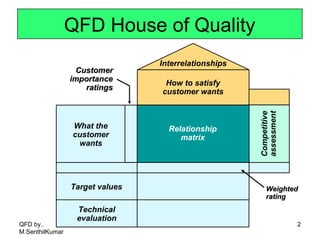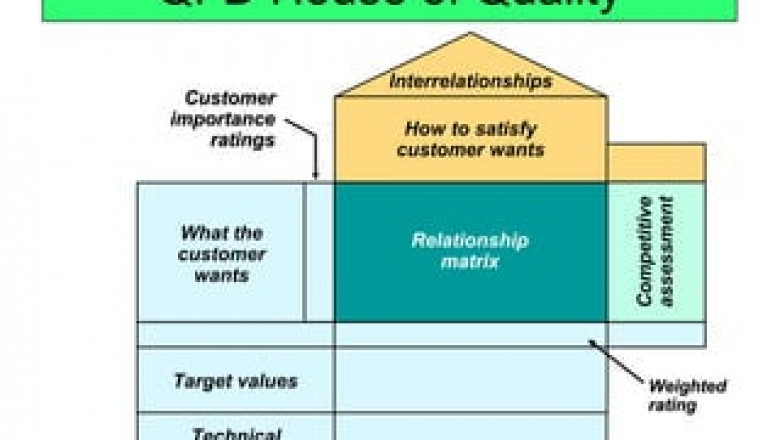views
Quality Function Deployment: Transforming Customer Needs into Superior Products
In today’s competitive market, understanding and meeting customer needs is vital for business success. Quality Function Deployment (QFD) is a structured methodology that helps organizations transform customer requirements into actionable design and production strategies. Originating in Japan in the 1960s, QFD has become an essential tool for product development, ensuring that every aspect of a product aligns with customer expectations.

What is Quality Function Deployment?
Quality Function Deployment is a customer-centric approach to product and service design. It involves identifying customer needs and systematically translating them into technical requirements, design features, and production plans. The ultimate goal of QFD is to enhance product quality and customer satisfaction while reducing time-to-market and development costs.
The Key Phases of QFD
1. Identify Customer Requirements (What’s Needed?)
The first step in QFD is gathering the voice of the customer (VOC). This involves collecting feedback through surveys, interviews, focus groups, or market research. The collected data is then organized into specific customer requirements, also known as "whats."
2. Translate Requirements into Technical Specifications (How It’s Delivered)
Once customer needs are identified, they are mapped against technical specifications or "hows." This phase involves brainstorming and determining measurable design parameters that will fulfill customer expectations.
3. Prioritize Features and Requirements
Not all customer requirements carry equal importance. QFD employs techniques such as weighting and ranking to prioritize features based on their significance to customers and their feasibility within the organization’s capabilities.
4. Develop the House of Quality
The House of Quality is a visual matrix central to QFD. It links customer requirements (rows) with technical specifications (columns), enabling teams to see relationships, identify trade-offs, and make informed decisions. This matrix serves as the foundation for subsequent phases of development.
5. Implementation and Continuous Improvement
The final phase focuses on integrating the prioritized requirements into the design and production process. Feedback loops are established to ensure that the product meets customer needs, allowing for continuous improvement in future iterations.
Benefits of Quality Function Deployment
- Enhanced Customer Satisfaction: By prioritizing customer needs, QFD ensures that products meet or exceed expectations.
- Improved Cross-Functional Collaboration: QFD fosters communication between teams, such as marketing, design, and production.
- Reduced Development Costs: Early identification of potential issues helps minimize costly revisions.
- Streamlined Decision-Making: The structured approach of QFD simplifies complex decisions, ensuring alignment with business goals.
Applications of QFD
QFD is widely used across industries such as automotive, electronics, healthcare, and software development. Whether designing a new car model or developing a user-friendly app, QFD provides a clear roadmap to achieve quality outcomes.
Conclusion
Quality Function Deployment is a powerful tool for businesses aiming to deliver superior products and services. Its systematic approach ensures that customer needs remain at the heart of every development decision.
Gain in-depth expertise in QFD and other quality management techniques with Unichrone courses. Our comprehensive training programs empower professionals to enhance product quality, streamline processes, and achieve excellence in their respective fields






















Comments
0 comment